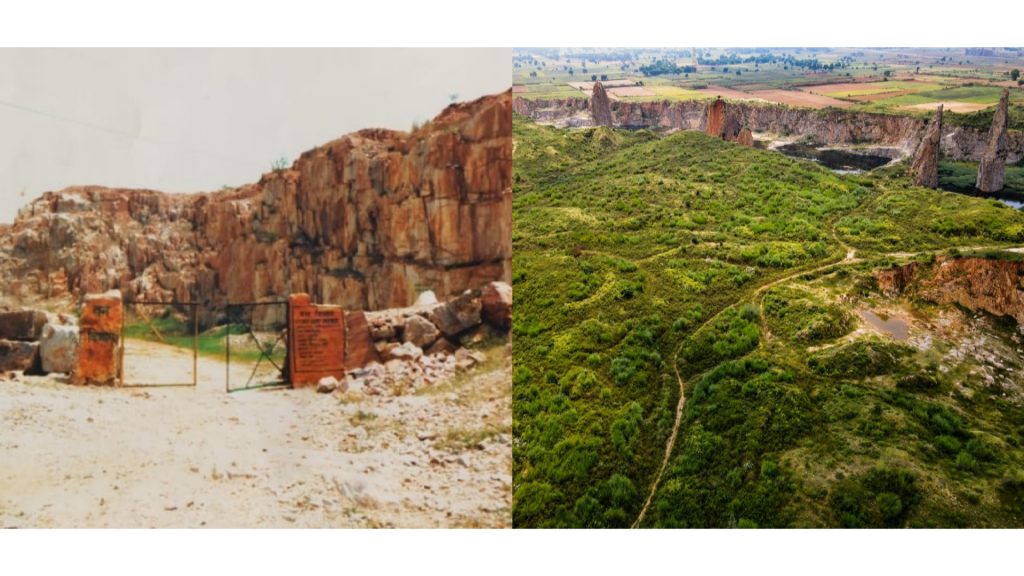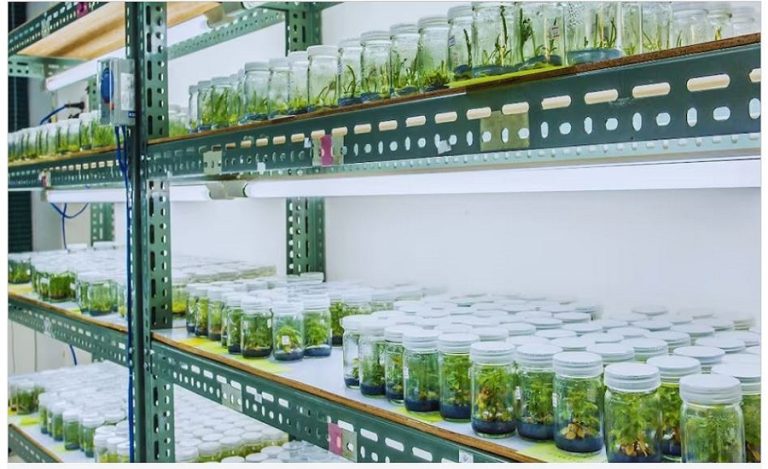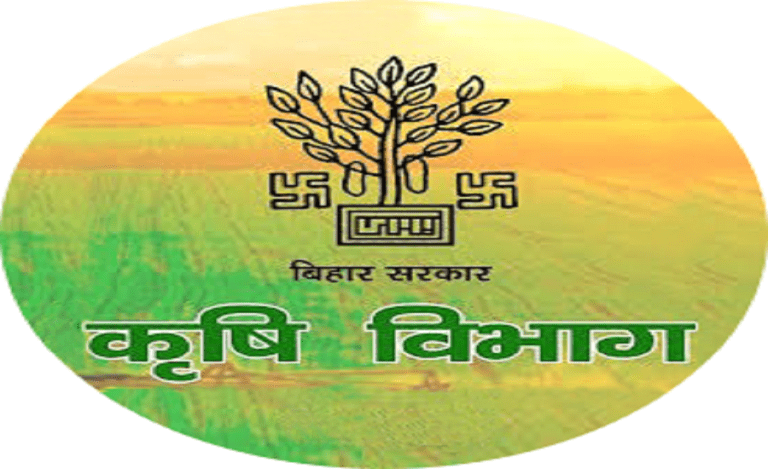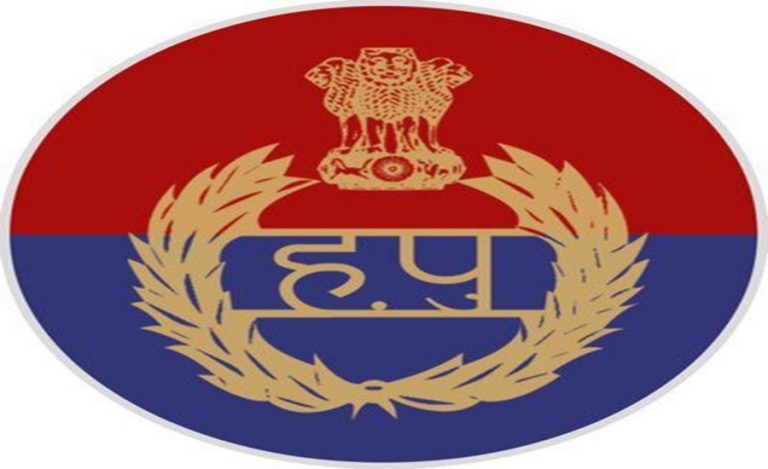The Kaharani village area in Alwar district was being illegally mined by from 2006 onwards by the stone mafia. To stop this illegal mining, the Rajasthan Forest Department undertook number of multi-pronged strategies and succeeded in recovering and restoring the area. Now they are creating eco-trails, water and birding activities in the area to promote eco-tourism.
Speaking with Indian Masterminds, IFS officer Apoorva Krishna Srivastava, Divisional Forest Officer, Alwar, shared details about how the formerly illegal mining area is slowly becoming an eco-tourism spot.
ILLEGAL MINING
Mining was a huge problem in Alwar district of Rajasthan because Alwar adjoins Gurugram and the NCR region, and has almost 20 percent of the total area covered with the Aravalli ranges. Mr. Srivastava informed that from the Google Earth Timeline, the mining started way back in 2006-2008.
“That has been a historical problem here. For construction in NCR, illegal mining takes place in this side of the border. Also, several crushers are located on the other side of the border with Haryana. So, the stones taken from here go to the crushers, as that area can be reached in just 10-15 minutes. They crush the stones and turn them into fine rubbles there, which is then used in construction,” he said.

Illegal mining in Kaharani village continued on a large scale and it was totally mafia driven because these people used to have arms with them and it was very violent at that time.
HOW IT WAS STOPPED
Hence, stopping this mining needed a multi-pronged strategy because most of the deterrents did not work as these people were very powerful. So, multiple strategies had to be adopted by the forest department. First, the department stationed a company of one platoon of Rajasthan Armed Constabulary(RAC) in that area and set up temporary tents.

“Secondly, if you want to stop illegal mining of this scale, you have to choke the supply as well. If you choke the supply, the demand will automatically go down. When crushers stopped functioning, the EMIs of all those dumpers, JCBs and other machineries that were doing these illegal mining could not be financed. Eventually the economy of the whole illegal mining collapsed,” Mr. Srivastava said.
He also shared that when he had joined there as DFO in 2020, he saw illegal mining taking place thrice, with his own eyes.
THE RESTORATION
In 2020, the forest administration decided that they could not fight this battle forever and neither could they afford to get the RAC stationed there forever. The place was actually a big hill and only some remnant pillars remained. Such kind of mining requires blasting from dynamite, and because of largescale blasting, the entire area was covered with dust. It was so dusty that when the officer went there for the first time in August 2020, his vehicle got stuck in it.
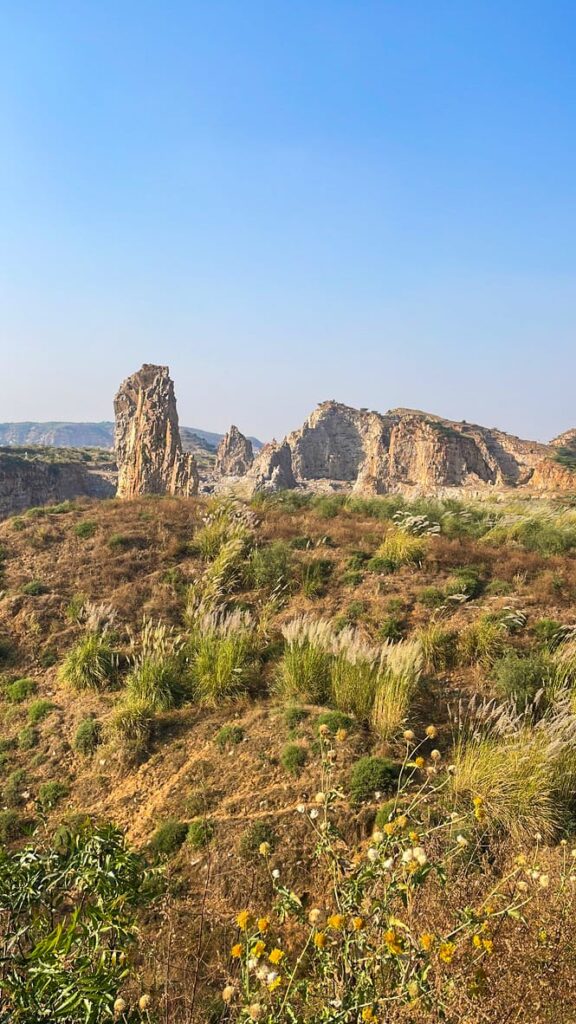
“So we thought of creating a plantation there. We started fencing the area and around 13-14 hectares of encroached land was taken back from nearby farms and industries. And, we planted the area in August 2020,” he said.
At the same time, the department got together several locals and one of them, named Md. Siddique, was given the charge of watching and guarding the place. Simultaneously, the forest department talked to the elders and explained to them how their water level was dropping because of such kind of illegal mining.
Everyone was already frustrated with so much dust, so, they were happy to link their economy with the restoration of the place after the forest department convinced them that they will grow grass there and allow them to take it for free.
“I believe that you cannot man a particular place forever, you have to generate economic livelihood interest of the locals and link it to the restoration of a place. So, we planted certain grasses which are useful to them on a large scale so that it can generate economic value,” Mr. Srivastava said.
PROMOTING ECO-TOURISM
On being asked about the eco-tourism promotion in the Kaharani village area, Mr. Srivastava shared some interesting information. He said that this place is located right next to the Delhi-Jaipur highway. Also, it has a very gothic and rustic look since it has been mined, and one can see the textures of stone which has a beautiful aesthetic value. Further, because of mining, several lakes have been created here and beautiful terrestrial birds, water birds, several types of ducks and fish appeared naturally after the department stopped all kinds of illegal activities.
“It was last winters that I got the news that some bikers from Gurugram wanted to go inside the area. They were going towards Jaipur and they heard about this place and wanted to halt there, which we allowed. They started camping, enjoying and making noodles. They clicked some photographs and shared them on social media and made them viral. Since then, so many bikers have visited this place and halted there,” he said.
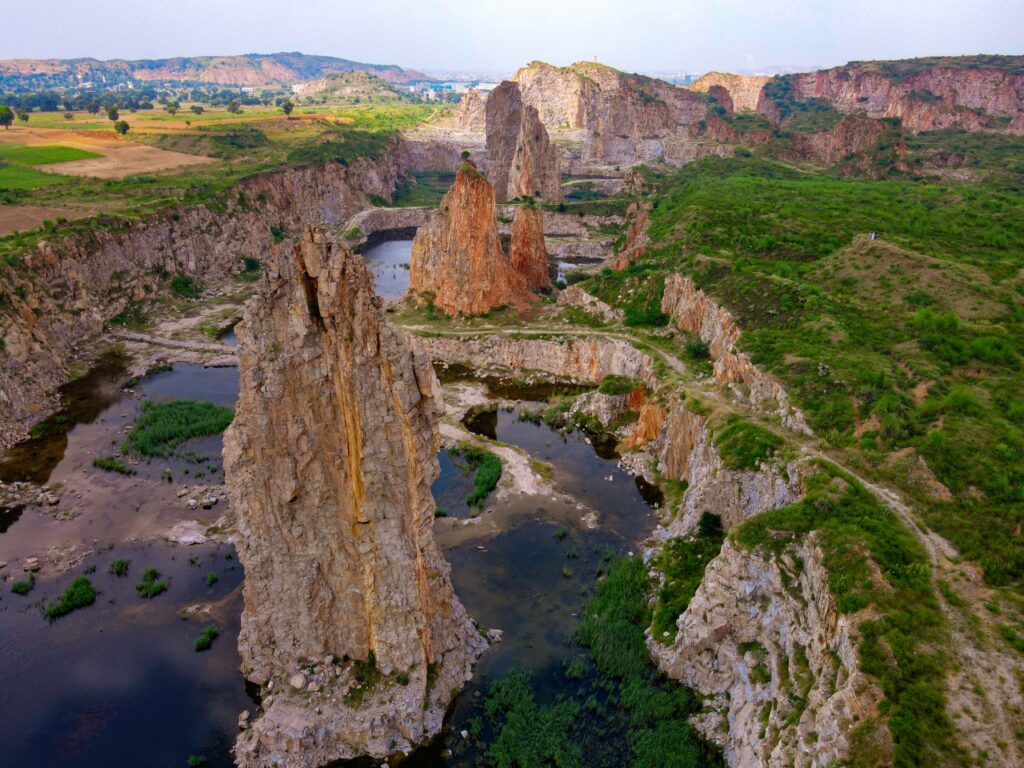
That a green grassland area has come up just next to Bhiwadi, one of the five hotspots of pollution in the country, has added its own value by the sheer contrast it portrays, and that has become an USP. Industries are also eyeing it, with the government promoting investments in the area.
“Till 2020, all we were doing was preventing illegal mining. And now, after two years, the place has come up so beautifully that we can see the vast scope before us. That’s why we want to create eco-trails, water activities, birding activities, etc., Mr. Srivastava said.
In conclusion, he said that although Alwar is mostly famous for illegal mining and there is a general impression that the Aravalli’s are being destroyed, the fact is, the Rajasthan Forest Department is trying to restore these places by linking livelihoods of the locals to the restoration process itself, and the Kaharani village area in Alwar district is a case in point.

